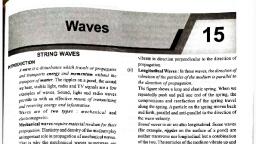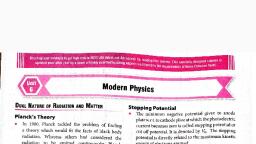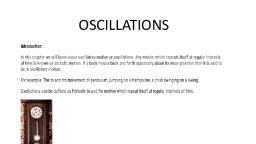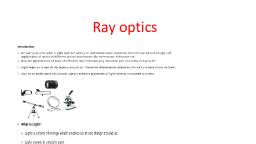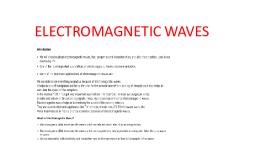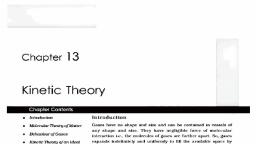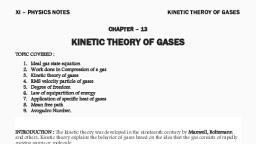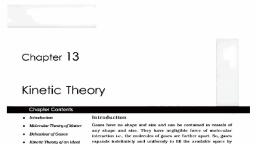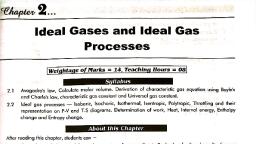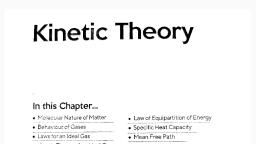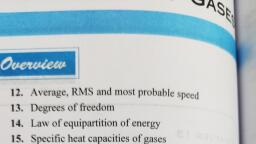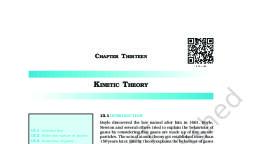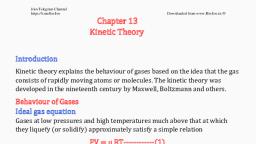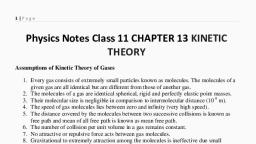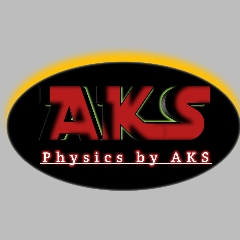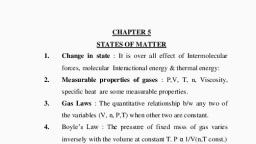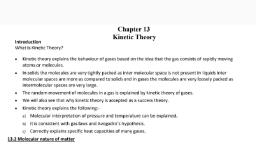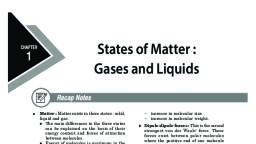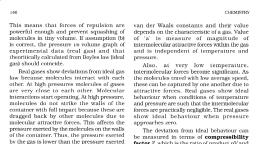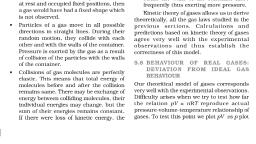Page 1 :
KINETIC THEORY OF GASES, , Introduction, What is Kinetic Theory?, , © Kinetic theory explains the behaviour of gases based on the idea that the gas consists of rapidly moving atoms or, molecules., , © In solids the molecules are very tightly packed as inter molecular space is not present In liquids inter molecular, spaces are more as compared to solids and in gases the molecules are very loosely packed as intermolecular spaces, are very large., , © The random movement of molecules in a gas is explained by kinetic theory of gases., o We will also see that why kinetic theory is accepted as a success theory., , © Kinetic theory explains the following:, o Molecular interpretation of pressure and temperature can be explained., , © It is consistent with gas lawsand Avogadro's hypothesis., , © Correctly explains specific heat capacities of many gases., , o. 0 ~“@, 20000 28 oe O O, 06 ise & Seo oO 6, KKK oO oe. oO, 05008 0 © 0, , Solid Liquid Gas ©
Page 2 :
Behaviour of Gases, , o Gases at low pressures and high temperatures much above that at which they liquify (or solidify) approximately satisfy, a relation between their pressure, temperature and volume:, , o PV=KT (i), , °, , This is the universal relation which is satisfied by all gases., o where PV, T are pressure,volume and temperature resp. and, , o Kis the constant for a given volume of gas. It varies with volume of gas., , °, , K=Nkp where, o N=number of molecules and, , © kg = Boltzmann Constant and its value never change., , °, , From equation (i) PV= Nkg, , °, , Therefore PV/NT = constant=(k,)(Same for all gases)., , °, , Consider there are 2 gases :- (P,,V,,T,) and (P,, V,,T.) where P, V and T are pressure, volume and temperature resp., , °, , Therefore P,,V,/(N,T,) = P,Vo/(NT.), © Conclusion: - This relation is satisfied by all gases at low pressure and high temperature., , Matter E> Molecules MP Atoms
Page 3 :
Justification of the Avogadro's hypothesis from equation of gas, , o Avogadro's hypothesis states that equal volumes of all gases at equal temperature and pressure have the same, number of molecules., , o Consider the equation PV/NT = constant and if PV and T are same for 2 gases then N(number of molecules) is also, same., , o According to Avogadro's hypothesis number of molecules per unit volume is same for all gasesat a fixed P and T., © Avogadro number is denoted by Ny. Where, denotes Avogadro number., © Ny = 6.02107 tis universal value., , o Experimentally it has been found that the mass of 24.4 litres of any gas is equal to molecular weight in grams at, standard temperature and pressure., , AR, @, ® °<x6.023x 102 =, , . 1 mole of Carbon Atom,, Carbon Atom 12 Grams
Page 4 :
Perfect Gas Equation, , o Perfect gas equation is given by PV=pRT,, o WherePV are pressure, volume, T =absolute temperature, = number of moles and R =universal gas constant., , o R= kgN, where kg = Boltzmann constant and N, = Avogadro's Number, o This equation tells about the behaviour of gas at a particular situation., © If agas satisfies this equation then the gas is known as Perfect gas or an ideal gas., Different Forms of Perfect Gas Equation, PV=uRT (i), , © Where p (no. of moles) = N/N, where N=no of molecules and N, = Avogadro number(no of molecules in 1 mole of, gas).Orp = M/M,where M=mass of sample of gas and M, = molar mass., , © PV =(N/N,)RT(putting 1=N/N, in equation(i)), © By simplifying PV = NkgT, o PV=NkgT => P = (N/V) kgT => P=nkgT where n(number density) =N/V where N=number of molecules and V=volume., , ° Therefore we get PV=nk,T, , Ideal Gas, , o Agas that satisfies the perfecigas equation exactly at all pressures and temperatures., © Ideal gas is atheoretical concept., , © No real gas is truly ideal.A gas which is ideal is known as real gas., , o Real gases approach the ideal gas behaviour for low pressures and high temperatures.
Page 5 :
Real gases deviation from ideal gas, , o Real gases approach the ideal gas behaviour for low pressures and high temperatures., o Ideal gas equation PV=uRT, for 1 mole ,y=1,PV=RT, , o =>PV/RT=constant, , o Graph should be a straight line(parallel to x-axis) for ideal gas., , © This means it has constant value at all temperature and all pressure., , © Butin case of real gases graph approach ideal gas behaviour at high temperature and low pressure., , © Athigh temperature and low pressure molecules are far apart. When temperature is increased the molecules will move, randomly far from each other., © Asa esult molecular interaction decreases the gas behaves as an ideal gas., , © The ideal behaviour comes into picture when the molecular present inside the gas don't interact with each other., Ideal gas, oe, /, , Purse, , , , Real gases approach ideal gas behaviourat low pressures and high temperatures.















